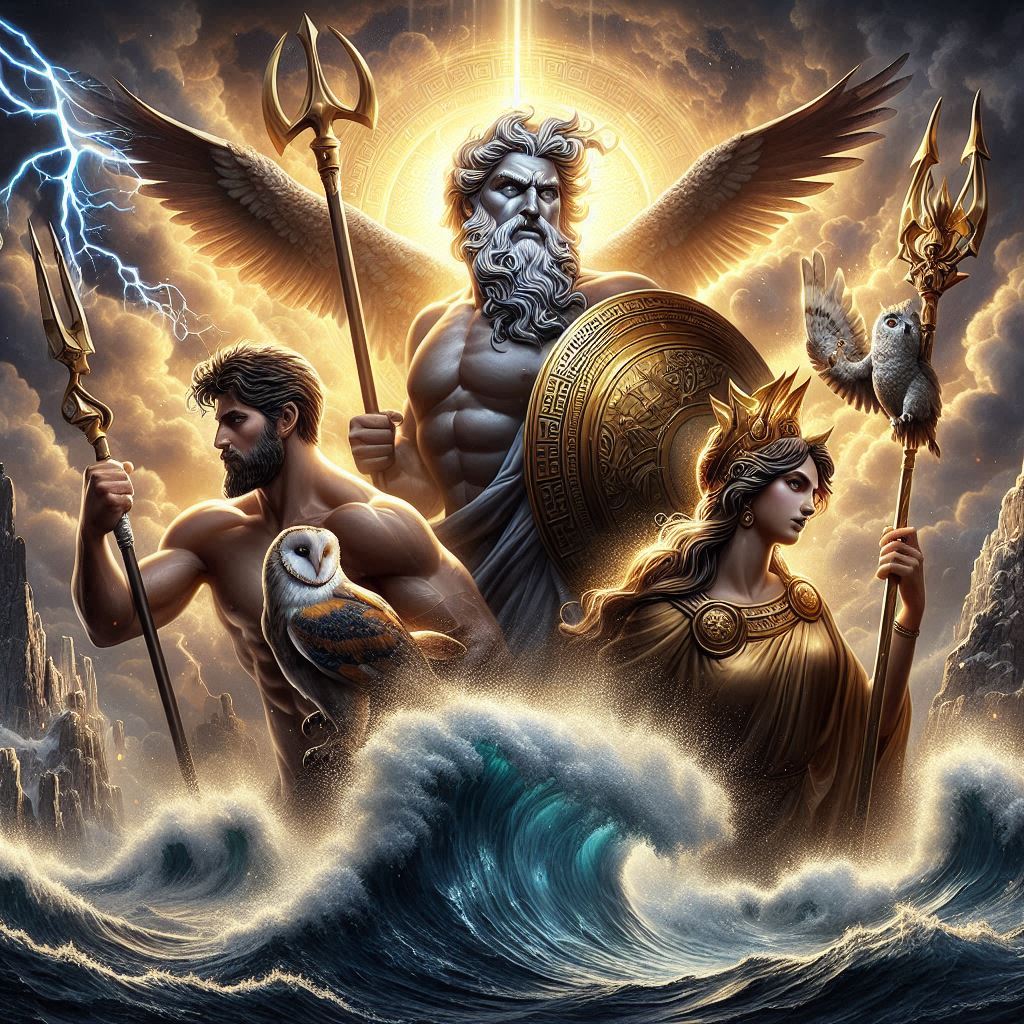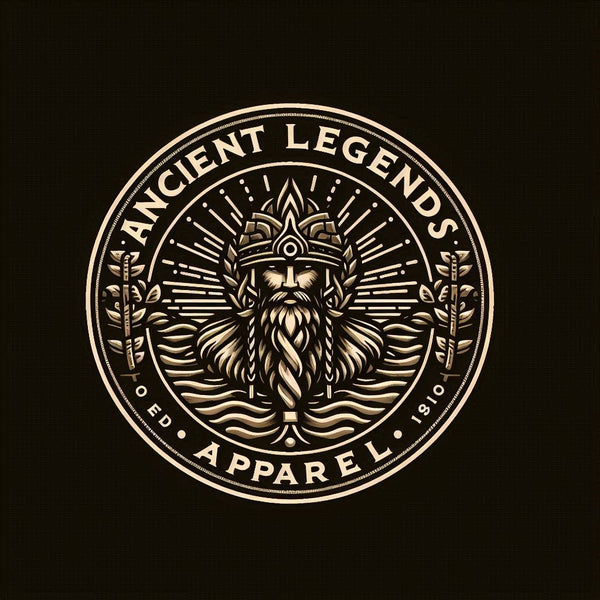
Greek Gods and Their Symbols: What Do They Represent?
Karl FinnbogasonShare
Greek mythology is filled with powerful deities, each associated with unique symbols that represent their domains, abilities, and personalities.
These symbols were often depicted in ancient art, temples, and literature, serving as visual representations of the gods' divine attributes. Even today, they continue to inspire art, fashion, and modern storytelling.
In this article, we explore some of the most well-known Greek gods and their symbols, uncovering the deeper meanings behind these legendary figures.
1. Zeus: The King of the Gods
Symbols: Lightning Bolt, Eagle, Oak Tree, Throne
Zeus, the ruler of Mount Olympus, was the god of the sky, thunder, and justice. His most iconic symbol is the lightning bolt, representing his control over storms and his ability to strike down those who defy the gods.
- The eagle symbolizes strength, power, and divine authority.
- The oak tree represents endurance and wisdom, often associated with Zeus’ sacred oracle at Dodona.
- His throne signifies his supreme rule over the cosmos.
Modern Influence: Zeus’ imagery appears in countless books, movies, and even high-end fashion, with lightning bolt designs representing power and dominance.
2. Poseidon: The God of the Sea
Symbols: Trident, Horse, Dolphin, Waves
Poseidon, the god of the ocean and earthquakes, is most commonly associated with his trident, a three-pronged spear that could summon tsunamis and shake the earth.
- The horse is linked to Poseidon because he was said to have created them.
- Dolphins symbolize the connection between Poseidon and the sea’s creatures.
- Waves represent his dominion over the vast, unpredictable ocean.
Modern Influence: Surfing brands, nautical-themed fashion, and sea-inspired tattoos often incorporate Poseidon’s symbols to represent power and connection to the water.
3. Hades: The Lord of the Underworld
Symbols: Helm of Darkness, Cerberus, Cypress Tree, Keys
Hades ruled the Underworld, overseeing the souls of the dead. His helm of darkness (or invisibility) granted him the ability to move unseen, symbolizing mystery and power.
- Cerberus, his three-headed dog, guarded the Underworld’s gates.
- The cypress tree represents mourning and death, often planted near graves.
- Keys symbolize Hades’ role as the keeper of the afterlife, controlling entry and exit.
Modern Influence: Dark and gothic fashion, as well as fantasy novels and games, often use Hades’ symbols to evoke mystery and the afterlife.
4. Athena: The Goddess of Wisdom and War
Symbols: Owl, Olive Tree, Aegis (Shield), Spear
Athena, the goddess of wisdom, war strategy, and justice, is best recognized by the owl, which symbolizes intelligence and insight.
- The olive tree represents peace and prosperity, as Athena gifted it to Athens.
- The aegis, a shield often depicted with Medusa’s head, grants protection and divine power.
- Her spear signifies tactical warfare and intellect-driven combat.
Modern Influence: Universities, military insignia, and feminist movements frequently adopt Athena’s symbols to represent knowledge and strength.
5. Apollo: The God of the Sun, Music, and Prophecy
Symbols: Lyre, Laurel Wreath, Sun, Bow and Arrow
Apollo, a multifaceted deity, was associated with light, music, and healing. His lyre, a stringed instrument, represents harmony and artistic inspiration.
- The laurel wreath symbolizes victory and poetic genius.
- The sun represents his role as a bringer of light and truth.
- His bow and arrow symbolize precision and his deadly skill as an archer.
Modern Influence: Music, poetry, and creative industries often use Apollo’s symbols to evoke artistic talent and enlightenment.
6. Artemis: The Goddess of the Hunt and Wilderness
Symbols: Bow and Arrow, Moon, Deer, Cypress Tree
Artemis, Apollo’s twin sister, was the goddess of the hunt and protector of nature.
- The bow and arrow reflect her expertise as a huntress.
- The moon represents her role as a lunar deity.
- The deer symbolizes her deep connection with wild animals and the forest.
- The cypress tree represents mourning, as Artemis was also a goddess of childbirth and protector of young women.
Modern Influence: Outdoor sports brands and eco-conscious movements often use Artemis’ symbols to represent strength and independence.
7. Hermes: The Messenger God
Symbols: Caduceus, Winged Sandals, Winged Helmet, Tortoise
Hermes was the swift messenger of the gods, known for his speed and cunning.
- The caduceus, a staff entwined with two serpents, symbolizes commerce and medicine.
- Winged sandals and helmet represent Hermes’ ability to travel swiftly between realms.
- The tortoise is linked to the creation of the first lyre, one of Hermes’ inventions.
Modern Influence: The caduceus is still used in medical logos, while winged footwear designs symbolize speed and agility.
8. Ares: The God of War
Symbols: Spear, Shield, Vulture, Dog
Ares, the god of war, embodied the chaos and brutality of battle.
- The spear and shield symbolize aggression and protection in combat.
- The vulture represents death and destruction left in the wake of war.
- The dog, often associated with warriors, symbolizes loyalty and ferocity.
Modern Influence: Military patches, warrior-themed sports apparel, and combat gear often incorporate Ares’ symbols.
9. Aphrodite: The Goddess of Love and Beauty
Symbols: Dove, Rose, Seashell, Mirror
Aphrodite, the goddess of love, passion, and beauty, is commonly associated with doves, which symbolize romance and peace.
- The rose represents passion and desire.
- The seashell signifies her birth from the sea foam.
- The mirror reflects beauty and self-awareness.
Modern Influence: The beauty and fashion industries often use Aphrodite’s symbols in branding, fragrances, and romantic-themed designs.
10. Dionysus: The God of Wine and Celebration
Symbols: Grapevine, Thyrsus (Pinecone Staff), Leopard, Theater Mask
Dionysus was the god of wine, revelry, and artistic expression.
- The grapevine symbolizes abundance and pleasure.
- The thyrsus, a staff topped with a pinecone, represents divine inspiration.
- The leopard embodies wild, untamed energy.
- The theater mask highlights his connection to drama and storytelling.
Modern Influence: Wine brands, music festivals, and theater groups frequently adopt Dionysus’ symbols.
The Enduring Legacy of Greek God Symbols
The symbols of the Greek gods continue to inspire fashion, art, and culture. Whether used in tattoos, jewelry, logos, or clothing, these ancient emblems still carry meaning today. From Zeus’ lightning bolt to Aphrodite’s rose, each symbol tells a story that has lasted for millennia.
Understanding these symbols allows us to connect with history and mythology, embracing the timeless power of the Greek gods and their enduring legacy.
